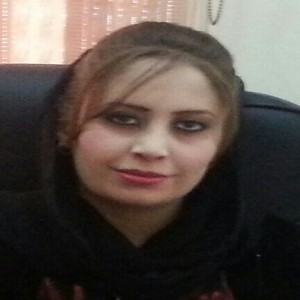Thesis
2022
Molecular Analysis and phylogenetic Study of Goat Breeds (Capra hircus and Capra aegagrus) Populations Using SNP and PCR-RFLP Markers in Duhok Province/Kurdistan Region of Iraq
2022-12-22
Summary:
In Iraq generally and Kurdistan Region especially, goat (Capra hircus) are an important resource for meat and milk production.
The main goal of this research was the use of PCR-RFLP and direct sequencing markers to reveal DNA polymorphisms in different growth trait genes, namely, Growth hormone gene (GH), Myostatin gene (MSTN) and Bone morphogenetic protein -15 (BMP-15), in 71 goat samples of different goat breeds in Kurdistan region -Iraq including Native, Shami, Meriz and Kamori (Capra hircus) and the wild mountain goat (Capra aegagrus). A number of genetic parameters were also calculated and the data obtained were further used to determine the genetic diversity and genetic relationship among the local goat breeds.
The results of GH1- Hea III/ RFLP (exon 2 and 3) revealed only two genotypes in all breeds were the homozygous AA and heterozygous AB, with absence of genotype BB. The calculated avrege of genotype frequency was 0.886 for the AB genotype and 0.114 for the AA genotype. The avrege of allelic frequency was 0.558 for the A allele \and 0.442 for the B allele. The average of observed heterozygosity was 0.882 and observed homozygosity was 0.118, indicating that the GH1 was polymorphic. The sequence data of GH1 gene of Meriz and wild goats revealed 82 SNPs in intron region. Additionally, in exon re-gion there were 7 SNPs in both breed samples which led to change amino acid sequence. The results of GH2 (exon 4) digested using Hae III, on the other hand, was shown to be monomorphic with the CC homozygous genotype. The calculated allele frequency was 1.000 for C allele and 0.000 for D allele in all goat breeds.
The average of observed heterozygosity in this region was 0.000 and the observed homozygosity was 1.000. The sequence data of GH2 gene of Meriz goat revealed 9 SNPs in functional region which led to change the amino acid sequence.
The MSTN (exon 1) polymorphisms were investigated in all breeds, MSTN-Dra I/RFLP revealed three genotypes AA and BB were homozygous and AB was heterozygous. The calculated avrege of genotype frequencies were 0.270, 0.368 and 0.362 for AA, BB and AB genotype respectively. The avrege of allelic frequency was 0.451 for the A allele and 0.549 for the B allele. The average of observed heterozygosity was 0.362 and observed homozygosity was 0.638. The sequence data of MSTN gene of Native and Shami goats revealed 30 SNPs in nonfunctional region. Also, in exon region there was 1 SNPs in both breed samples which did not change amino acid sequence and its silence mutation.
The BMP-15 (exon 2) polymorphisms were also investigated in all breeds, where BMP-15-Hinf I/RFLP revealed three genotypes: AA and BB were homozygous, and AB was heterozygous. The avrege of genotype frequencies were 0.2, 0.6 and 0.2 for AA, BB and AB genotype respectively. The avrege of allelic frequency was 0.3 for the A allele and 0.7 for the B allele. The average of observed heterozygosity was 0.2 and observed homozygosity was 0.8. The sequence data of BMP-15 gene of Native, Shami and Wild goats revealed 20 SNPs in exon region in all breed samples which led to change amino acid sequence.
The phylogenetic analysis or unrooted neighbor-joining tree highlighted the genetic distance among those five goat populations and separated them into two main groups according to their genetic differentiation that present among them and according to the geographical distribution. The first group consisted of Kamori, Meriz, Native, Shami (Capra hircus) while the second group included only Wild goat (Capra aegagrus).
2013
Genetic diversity structure of walnut ( Juglans regia L ) populations in duhok province revealed by SSR markers
2013-06-19
Abstract
Nine microsatellites markers (WGA001, WGA321, WGA376, WGA349, WGA089, WGA276, WGA118, WGA004 and WGA331) were used to characterize Persian walnuts (Juglans regia L.) populations in five villages (Sharanesh, Bedohe, Kanizarke (Akre), Kashane and Kuzo) of Duhok province.
The microsatellites amplified (PCR products) a total of 362 alleles across all populations. The number of alleles per locus ranged from five alleles in Akre population to thirteen alleles in Sharanesh population, with an average of 8.04. The molecular sizes of the amplified bands ranged from 160 bp to 282 bp in all populations. The observed heterozygosity (Ho) within populations ranged from 0.55 at WGA089 to 0.87 in the locus WGA276 with an average of 0.69 The PIC value (0.90) indicated that all markers were highly informative and useful for genetic diversity studies in these populations.
The proportion of genetic variation presented among populations accounted for 8.8% of the total genetic diversity so it indicated a moderate level of genetic diversity between populations. The Fis average 0.164 indicated that, there was a regular tendency toward heterozygote deficiency and indicated the presence of inbreeding within the populations.
The phylogenetic analysis or unrooted neighbor-joining tree highlighted the genetic distance among those five populations and separated them into three main groups placing each population according to its genetic background. The first group consists of populations Bedohe and Akre. The second group consists of populations Sharanesh and Kuzo
and the third group contains Kashane population.
Back
